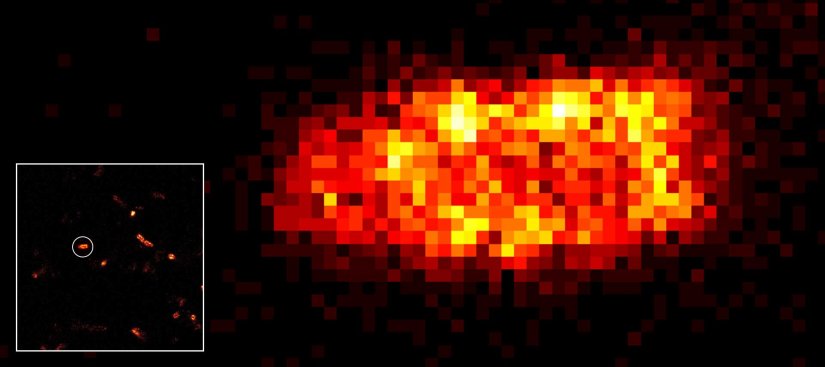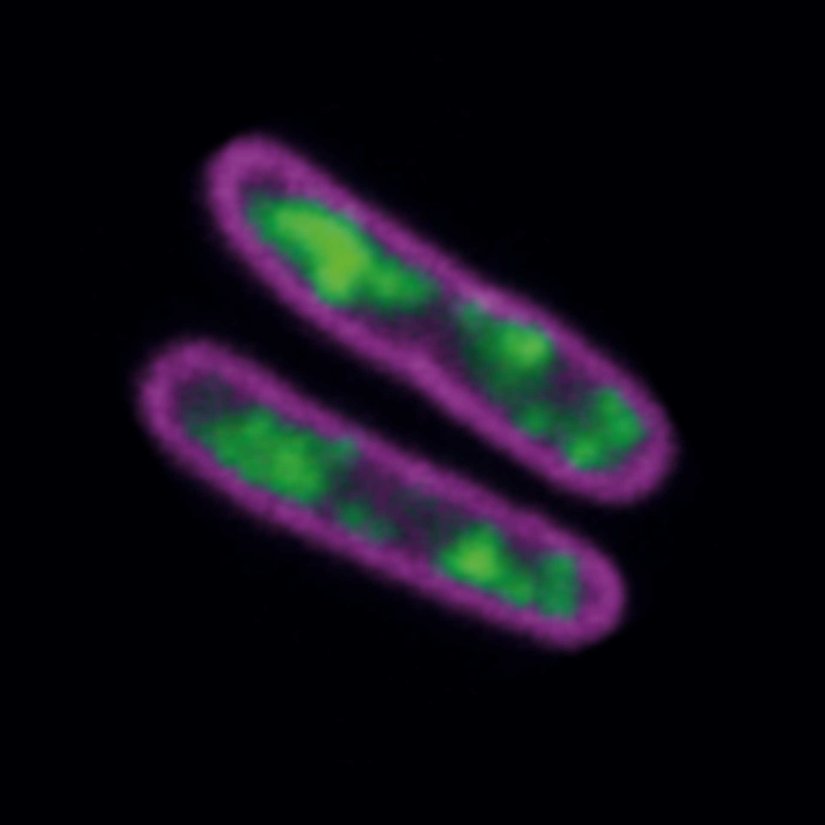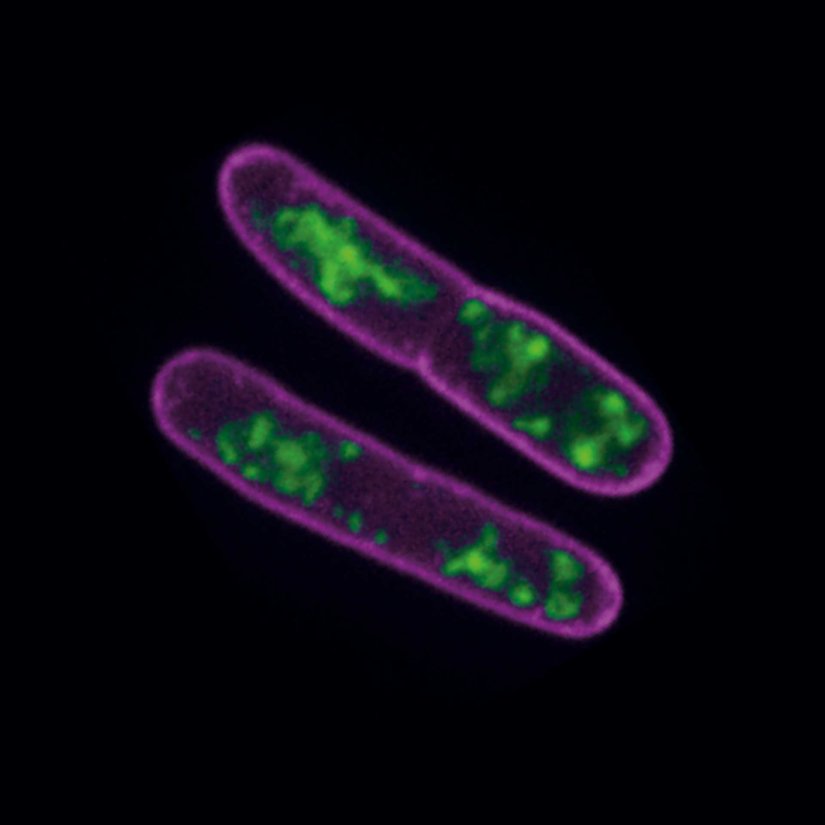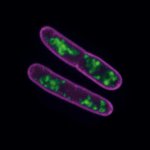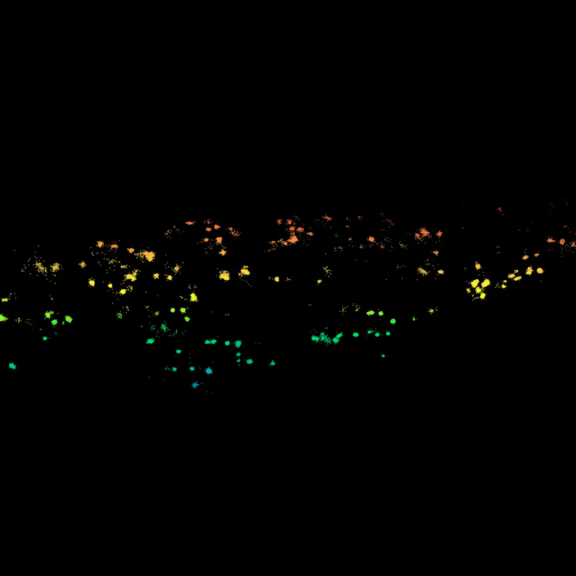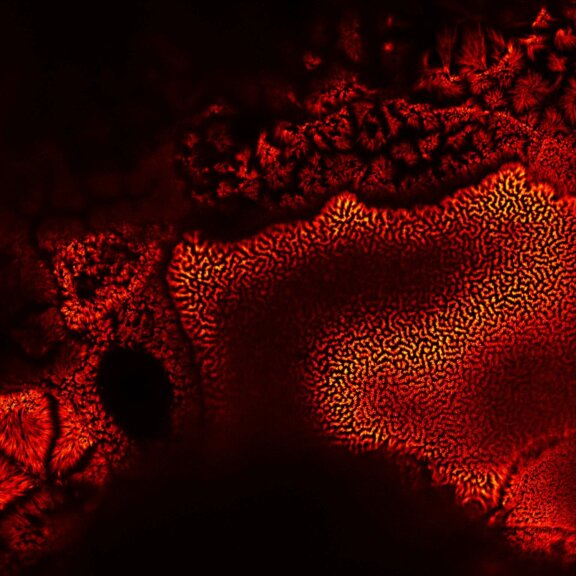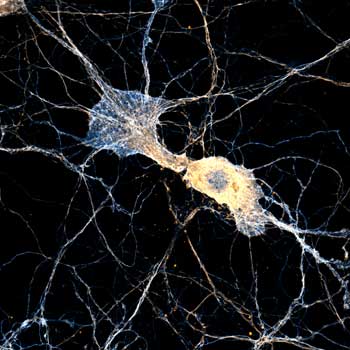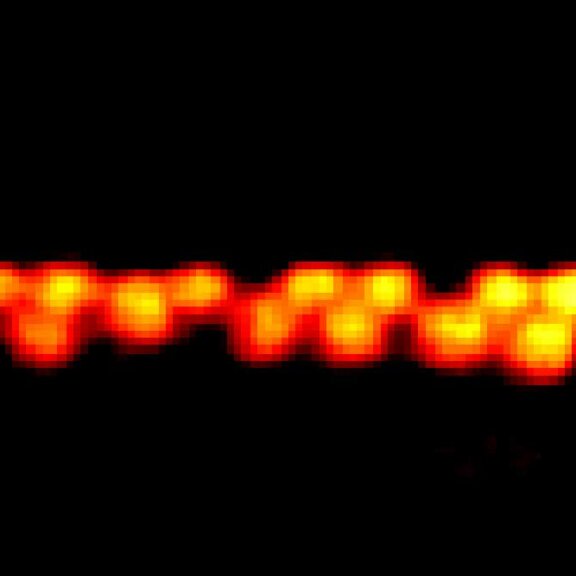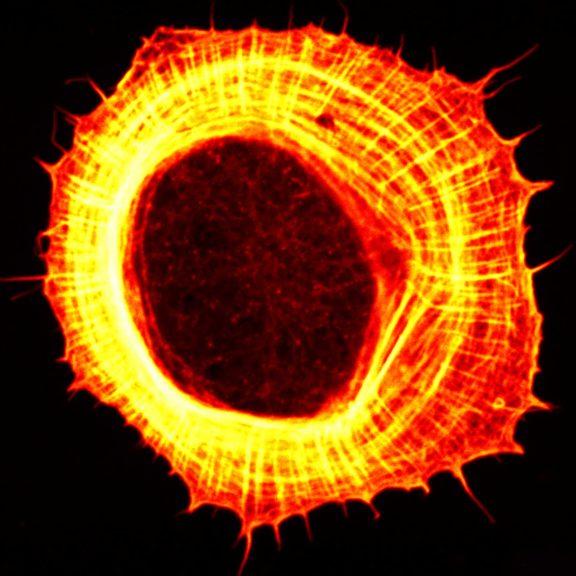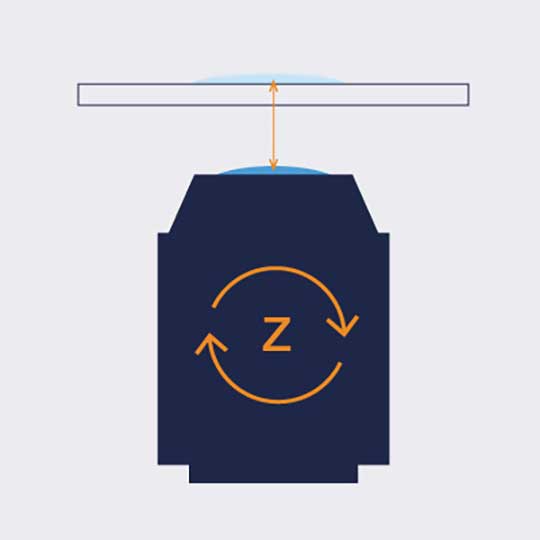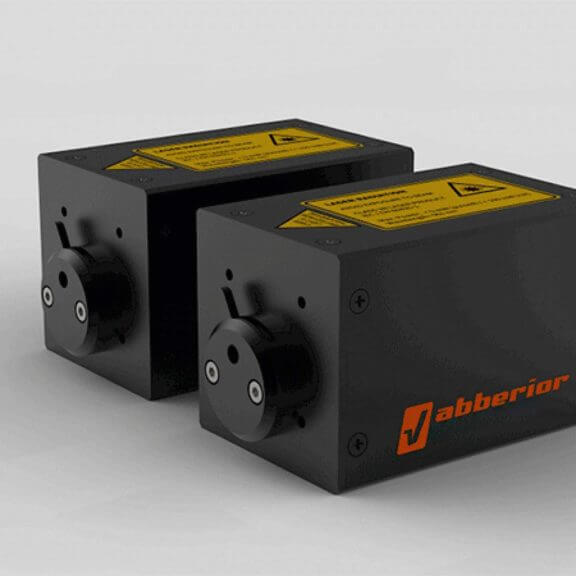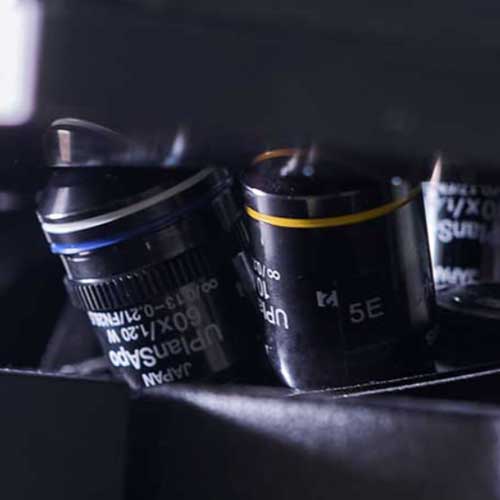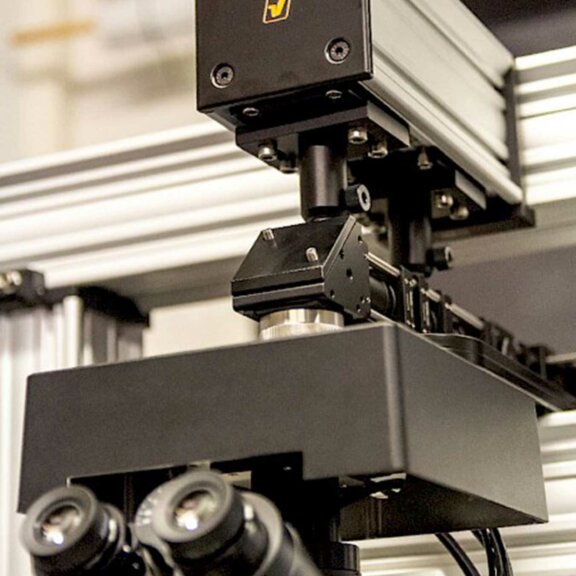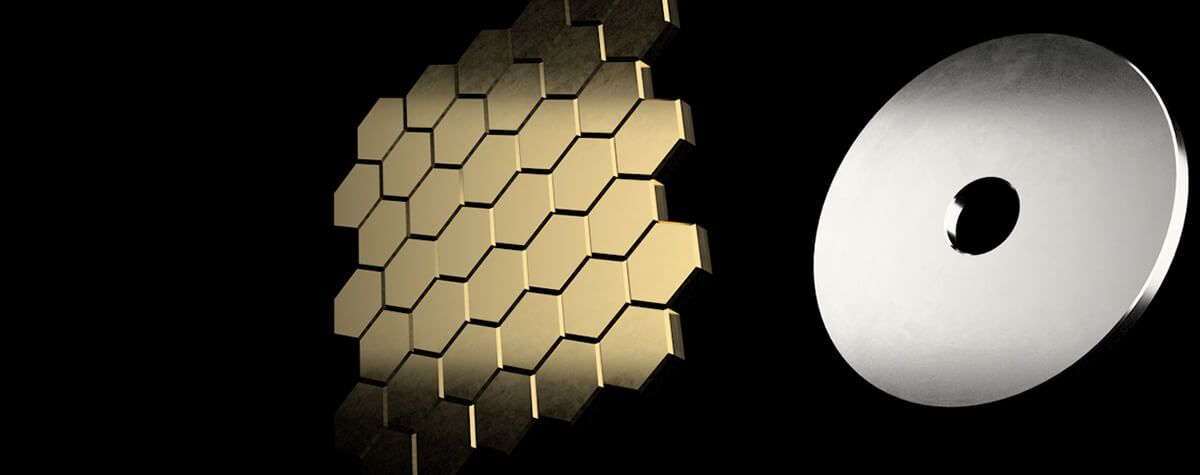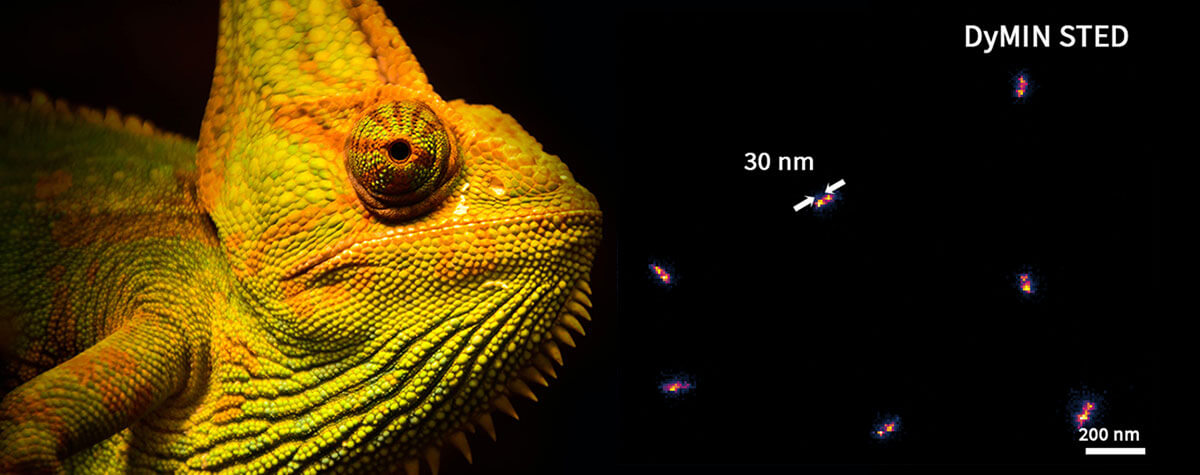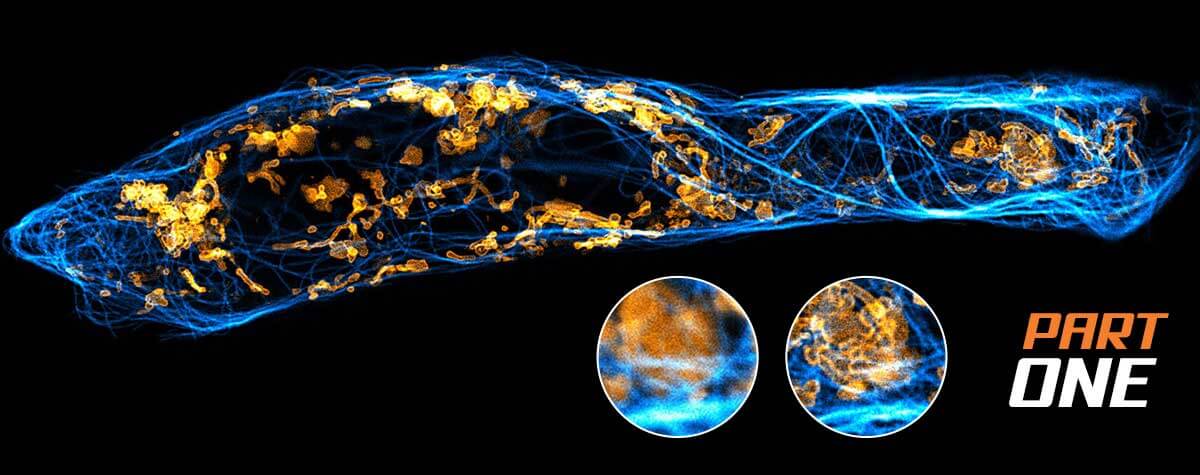Nothing is too small to be resolved – Microbiology
FAQ Video 38

MINFLUX allows an everyday 3D resolution of 2 – 3 nm and offers about 100 times faster tracking than with a camera-based system.
Prokaryotes, comprising bacteria and archaea, are generally smaller than eukaryotic cells, but can be visualized with diffraction-limited microscopy. Many of their subcellular structures, however, lie beyond its resolving power. The same applies to the details of host-pathogen interactions. Protozoa, algae, and fungal cells, on the other hand, can be easily imaged with a conventional light microscope, but also here the detection of smaller details is hampered by the diffraction limit of light. Today, superresolution microscopy opens up completely new opportunities in microbiology.
abberior’s STED provides resolution down to 20 nm in 2D and 75 nm in 3D, and MINFLUX takes it another step further with single-digit nanometer resolution and molecular tracking at frequencies up to 10 kHz. It has been used, for example, to map the movement of individual ribosomes inside a bacterial cell. Add abberior’s fluorescent dyes and labels optimized for applications from confocal to MINFLUX, and you are ideally equipped to make your microbiological imaging experiments a success.
Talk to a scientist >Microscopy for microbes
Microbial organisms come along in countless shapes and with highly diverse cellular architecture. Confocal and superresolution imaging colorfully captures this variety of cellular life. These bacteria were stained for DNA (green) and membranes (magenta) and imaged with STED.
Test your sample >From blurs to brilliance –
superresolution for microbiology
abberior microscopes facilitate superb imaging. Their optics, developed for the high demands of superresolution STED, also bring confocal imaging to a new level. On top of confocal and STED microscopes, abberior is the only commercial provider of MINFLUX, which achieves single-digit nanometer localization precision. Shown is a 2D MINFLUX image of Y. enterocolitica sorting platform protein Halo-YscL.
The sample was kindly provided by Alexander Carsten and Martin Aepfelbacher, Institute of Medical Microbiology, Virology and Hygiene, University Medical Center Hamburg Eppendorf, Germany.
Get a demo >MINFLUX – unrivaled resolution and speed

The MINFLUX platform offers an unprecedented array of imaging possibilities and allows you to resolve structures as small as a molecule, along all three dimensions.
This unmatched resolution capability combined with unprecedented speed reveals sample details never seen before and helps to dissect fast and dynamic cellular processes in space and time. MINFLUX has been used, for instance, to precisely localize an injectisome component within a Y. enterocolitica cell and map its distribution. MINFLUX is the world’s most powerful fluorescence microscope. Details >
INFINITY – forever cutting edge

The INFINITY platform is the most customizable platform for all things microscopy and may be adapted to your particular demands in microbiological imaging. INFINITY is always up to the challenge. Just tell us what you need and we will build you a customized, continuously upgradable system specialized for your research. Details >
MIRAVA POLYSCOPE – one for all and all for one

MIRAVA® is the first true POLYSCOPE®. Every resolution – from millimeters down to 3 nm – combined in a singularly unique system. MIRAVA unites four microscopy technologies to cover an unprecedented resolution spectrum, extending over several orders of magnitude from diffraction-limited imaging all the way to true molecular resolution. Our LiGHTBOX software allows beginners to intuitively arrive at a top-notch image within three clicks, while also giving experts full control over the instrument. Details >
STEDYCON 2 – confocal, STED, lifetime… WOW!

The STEDYCON upgrades your existing widefield microscope to a confocal, STED, and lifetime machine with a resolution down to 30 nm. All that’s required is a free camera port and a good objective lens. With its super-intuitive user interface, the STEDYCON provides an intelligent microscope platform that enables everyone to acquire superb superresolution images after only minutes of training. Details >
Magnified microbes
3D MINFLUX nanoscopy of Y. enterocolitica sorting platform protein Halo-YscL in xy view of two bacteria. The z-axis is color coded.
Sample from Alexander Carsten, Martin Aepfelbacher, Institute of Medical Microbiology, Virology and Hygiene, University Medical Center Hamburg Eppendorf, Germany
Ask for detailed information >Choose a superpower for your experiment – our modules
We offer many modules to overcome the specific imaging challenges in your research. Use TIMEBOW to separate signals in the same spectral channel by their fluorescent lifetime, extending your options for multicolor imaging. FLEXPOSURE adaptive illumination puts light only where it has an effect and may reduce the light burden by orders of magnitude, keeping your cells happy during extended live cell imaging and volume scans. RAINBOW detection allows you to collect both maximum signal and extend spectral flexibility. Our modules can do all of this and even more! And if you can’t find what you need on our website, get in touch with us, and we’ll develop it for you.
MATRIX Detector
Many eyes see more than one. The MATRIX detector drastically improves signal-to-background ratio, resolution, and dynamic range.
TIMEBOW Imaging
TIMEBOW lifetime imaging for stunning results at confocal and STED super-resolution.
FLEXPOSURE Illumination
Brings down the light dose on your sample and lables dramatically. Key ingredient for volume and live-cell superresolution.
RAYSHAPE Mirror
Dynamic aberration correction with a deformable mirror over about 200 µm z-range. 140 digital actuators adjust the mirror surface within milliseconds.
Custom Solutions
We offer solutions for even the most challenging applications. Everything that can be done, we will do.
Broaden your knowledge
of microscopes, dyes, and superresolution
If you want to make your theoretical expertise on light microscopy grow, check out our knowledge base! It covers topics from the very basics (for example: “What is resolution?”) to advanced imaging and staining techniques (“STED-PAINT for high-performance superresolution”) and the many questions that lie in between.
Movement of fluorophore-labeled 30S ribosomes (colored) in two E. coli bacteria (grayscale) tracked with MINFLUX.
Tell me more >Confocal microscopy offers superior optical sectioning. But what is that exactly? And what about other ways to get rid of the background, such as array-based detectors like the MATRIX? Details >
Fluorescent labeling strategies have become more and more sophisticated and offer ever-new options to improve microscopic imaging. Among the latest are exchangeable HaloTag ligands that put an end to photobleaching for good. Details >
Every technique that allows to observe cells is more or less invasive and fluorescence microscopy is no exception. Many imaging situations profit from a reduction in light dose as provided by FLEXPOSURE adaptive illumination. Details >
Let the cells shine with immunofluorescence labeling

The most versatile and therefore most common strategy to bring the dye to the sample is immunofluorescence. In case you always wanted to know how immunofluorescence works and which properties of antibodies make it so powerful and at the same time define its limits! Details >
Superresolution for biology: when size, time, and context matter

The spatial resolution achievable with today’s light microscopes has unveiled life at the scale of individual molecules. Size is no longer a barrier to seeing biology at the most fundamental level. But life is not static. It emerges from movement and change. How do superresolution technologies hold up to the challenges of documenting dynamic biological mechanisms? Details >
STEDYCON: ease-of-use in a shoebox

A sleek, black-and-orange box transforms your widefield microscope into a confocal and a superresolution STED instrument and your exploration of subcellular structures into a seamless, discovery-rich experience. Carefully designed with masterly engineering, STEDYCON breaks the stereotype of the finicky, hard-to-use scope. It opens new possibilities at the press of a button for any user and almost any location. How does it do it? The secret’s in the box. Details >
Are you surprised that the very nature of light caps the resolution that we can achieve in microscope images? Luckily, there are workarounds to this limit. These workarounds push the amount of detail in an image by manipulating precisely where and when fluorophores are allowed to emit. As such, they provide us with a completely new set of tools to shrink the distance between two points while still being able to resolve them. Details >












